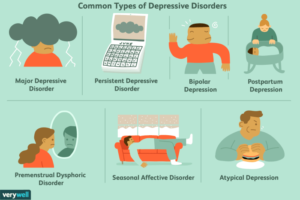
Autism acceptance is like diving into a pool of colorful quirks and delightful differences, where every splash tells a unique story! It’s the warm, fuzzy blanket that wraps around individuals on the autism spectrum and the families supporting them, inviting everyone to join the fun instead of standing on the sidelines. While autism awareness shines a light on understanding the condition, acceptance takes it a step further, transforming mere acknowledgment into a celebration of individuality and community.
In a world that often rushes to label and categorize, autism acceptance stands tall as a beacon of understanding. It emphasizes not just the challenges faced by those with autism, but also highlights their strengths and contributions. This journey involves unraveling the complexities of mental health, health care, and developmental disabilities, all while fostering a spirit of inclusion that benefits everyone.
Understanding Autism Acceptance
Autism acceptance is like taking off those clunky shoes that everyone insists are “in style” and finally letting your toes breathe. It’s about recognizing, embracing, and celebrating the unique characteristics of individuals on the autism spectrum. Unlike mere awareness, which often revolves around understanding the challenges faced, acceptance goes a step further by fully acknowledging and valuing neurodiversity as a vital part of our society’s fabric.
This shift is not just a nice-to-have; it’s an essential component of fostering a more inclusive environment for everyone.The distinction between autism awareness and autism acceptance is critical. Awareness is typically a one-dimensional view that often spotlights the obstacles and difficulties individuals with autism face. In contrast, acceptance emphasizes understanding their experiences, strengths, and contributions to society. It invites everyone to move beyond mere recognition into a realm where being different is not just tolerated but celebrated.
For instance, awareness might lead to a seminar featuring statistics on autism but acceptance turns that seminar into a lively discussion where autistic voices lead the way, complete with humor, anecdotes, and maybe even some dance breaks.
Differences Between Autism Awareness and Autism Acceptance
Understanding the nuances between awareness and acceptance is crucial for fostering a supportive environment. Awareness often comprises informational campaigns, while acceptance focuses on emotional connection and community building. This difference can be illustrated through several key points:
- Awareness is often about learning facts and figures, while acceptance requires a commitment to empathy and inclusion.
- Awareness may involve a day dedicated to promoting understanding, but acceptance is a daily practice that includes listening to autistic voices and experiences.
- Awareness can sometimes lead to stereotypes, whereas acceptance actively works to dismantle them and promote individuality.
Acceptance creates a ripple effect that positively impacts individuals and families alike. When society embraces acceptance, it cultivates an environment where individuals on the spectrum can thrive. Families feel supported, understood, and empowered to share their unique narratives without fear of stigma.
Impact of Autism Acceptance on Individuals and Families
The positive ramifications of autism acceptance extend far beyond the individual; they ripple through families and communities, creating a tapestry of support and understanding. The following points illustrate these impacts:
- Enhanced self-esteem: Individuals on the spectrum often experience a boost in confidence when they feel accepted and valued for who they are.
- Improved mental health: Acceptance reduces feelings of isolation and anxiety, leading to better overall well-being.
- Stronger family bonds: Families that embrace acceptance tend to communicate more openly and support each other more effectively.
- Broader community support: Acceptance helps create networks of individuals and organizations that provide resources, encouraging collaboration and shared experiences.
Acceptance transforms lives—it’s about making space for diverse neurotypes and understanding that every mind brings something unique to the table, whether it’s a knack for complex problem-solving or an extraordinary talent for imitating animal sounds!
Health and Autism
Understanding the health implications associated with autism is crucial for providing effective support and care. Individuals with autism often experience a range of health issues that can complicate their daily lives. It’s not just about the autism itself; it’s a health buffet featuring co-occurring conditions that can add a sprinkle of complexity to their health journey.
Common Health Issues Associated with Autism
Many individuals with autism face a variety of health challenges beyond the spectrum traits. These can include:
- Anxiety Disorders: A frequent companion to autism, anxiety can turn everyday situations into Everest-like challenges.
- Attention Deficit Hyperactivity Disorder (ADHD): It’s like having a brain that wants to juggle while riding a unicycle—complex but not impossible!
- Epilepsy: Occurring in about 20-30% of individuals with autism, this neurological condition can add an unexpected twist to their health narrative.
- Gastrointestinal Issues: From tummy troubles to food sensitivities, these issues can affect mood and behavior—talk about a gut feeling!
- Sleep Disorders: Many individuals on the spectrum struggle to catch those z’s, leading to a cycle of fatigue and irritability.
The myriad of co-occurring conditions illustrates the need for a comprehensive approach to healthcare, ensuring that all aspects of health are addressed holistically rather than in isolation.
Mental Health and Emotional Well-being
The intersection of autism and mental health is a critical area to explore. Autism can pose unique challenges to emotional well-being, often leading to higher rates of depression, anxiety, and stress. Many individuals may experience feelings of isolation, especially if their communication styles differ from neurotypical peers. Important insights include:
The emotional landscape of individuals with autism can be as intricate as a Picasso painting—beautiful but complex.
This complexity is often exacerbated by societal misunderstandings and stigma. Therefore, understanding and validating their experiences is essential. Strategies for promoting mental health include:
- Therapeutic Support: Cognitive Behavioral Therapy (CBT) can be particularly effective in addressing anxiety and depression.
- Mindfulness Practices: Techniques such as meditation or yoga can help in grounding and enhancing emotional regulation.
- Social Skills Training: Facilitating better social interactions can alleviate feelings of loneliness and improve self-esteem.
Creating an environment that encourages open dialogue about emotions can significantly enhance mental health outcomes for individuals with autism.
Tailored Healthcare Approaches
One size does not fit all when it comes to healthcare for individuals with autism. Tailored healthcare approaches are necessary to address the diverse needs and preferences of those on the spectrum. This personalized care can lead to better health outcomes and enhanced quality of life. Key components of effective healthcare strategies include:
- Individualized Care Plans: Each plan should consider co-occurring conditions and personal preferences, as unique as a snowflake!
- Interdisciplinary Teams: Healthcare providers, including psychologists, dietitians, and occupational therapists, should collaborate to create a cohesive support network.
- Parental and Caregiver Involvement: Engaging families in the healthcare process ensures that care aligns with the individual’s lifestyle and values.
By employing these tailored strategies, healthcare systems can better serve the autism community, leading to improved physical and emotional well-being.
Developmental Disabilities and Acceptance

Understanding developmental disabilities can feel like navigating a funhouse maze—it’s full of twists, turns, and unexpected surprises. Autism, as part of the broader landscape of developmental disabilities, presents a unique and vibrant spectrum—much like a colorful patchwork quilt where each piece contributes to a larger, beautiful whole. Acceptance and inclusion are paramount in helping individuals with developmental disabilities thrive in their communities.
Developmental disabilities encompass a variety of conditions that affect physical, learning, language, or behavioral areas of functioning. Autism fits snugly within this umbrella, alongside other conditions such as Down syndrome and cerebral palsy. Recognizing the shared challenges and distinct experiences across these disabilities fosters a culture of understanding and support. Accepting neurodiversity means embracing the idea that differences are not deficits but rather unique perspectives that can enrich our communities.
Strategies for Fostering Acceptance and Inclusion
Creating an inclusive environment for individuals with developmental disabilities requires strategic efforts and a sprinkle of creativity. Here are several effective strategies that can make a meaningful difference:
- Education and Awareness: Organizing workshops and community events can help demystify developmental disabilities. Sharing personal stories and facts can transform perceptions.
- Peer Support Programs: Establishing buddy systems where individuals with and without disabilities can engage fosters friendships and understanding among peers.
- Inclusive Practices in Schools: Implementing special education programs that focus on the strengths of students with developmental disabilities encourages a culture of acceptance from a young age.
- Advocacy and Representation: Supporting advocacy groups that promote the rights of individuals with developmental disabilities ensures their voices are heard in policy-making arenas.
- Celebrate Differences: Organizing events that highlight the talents and achievements of individuals with developmental disabilities can shift societal narratives towards positivity and acceptance.
Creating community resources that reflect both the needs of individuals with autism and other developmental disabilities can enhance acceptance. While autism resources may focus on behavioral therapies and sensory-friendly environments, resources for other developmental disabilities might emphasize physical accessibility and communication support. By comparing these resources, communities can identify gaps and develop inclusive programs that meet the diverse needs of all individuals.
“Acceptance is not a passive state; it’s an active engagement with the world that emphasizes respect, understanding, and love.”
In summary, fostering acceptance for individuals with developmental disabilities, including autism, necessitates a collective effort from all community members. Recognizing the unique contributions and challenges of each condition within the spectrum promotes a more inclusive and compassionate society.
Epilogue

As we wrap up our colorful exploration of autism acceptance, it becomes evident that this journey isn’t just about understanding autism; it’s about creating a world where every person can thrive, quirks and all! By promoting acceptance, we encourage richer relationships, better mental health, and a community bursting with diversity. So let’s ditch the labels and embrace the beautiful tapestry of human experiences—because at the end of the day, acceptance is not just a goal, it’s a celebration!
FAQ Overview
What is the difference between autism awareness and autism acceptance?
Autism awareness focuses on understanding and recognizing autism, while autism acceptance goes further, promoting appreciation and inclusion of individuals with autism as valued members of society.
How can autism acceptance benefit families?
Autism acceptance helps families feel supported and less isolated, fosters positive relationships, and encourages communities to create inclusive environments where their loved ones can thrive.
What are some common health issues faced by individuals with autism?
Individuals with autism may experience a range of health issues, including anxiety, depression, ADHD, and epilepsy, along with sensory processing challenges.
How can tailored healthcare approaches help individuals with autism?
Tailored healthcare approaches consider the unique needs of individuals with autism, leading to better communication, understanding, and ultimately, improved health outcomes.
What strategies can foster acceptance for individuals with developmental disabilities?
Strategies include education, promoting positive narratives, community engagement, and providing opportunities for social interaction and inclusion in various settings.





